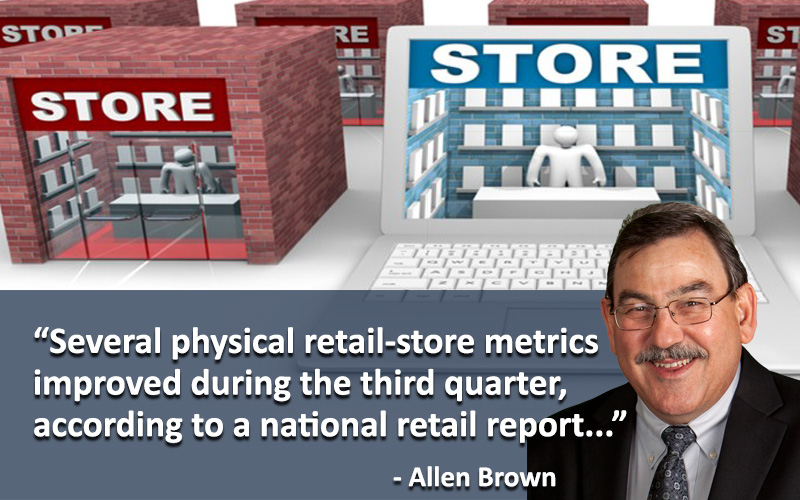Amazon? Is that an outdoor-wear clothing store or something?
Several physical retail-store metrics improved during the third quarter, according to a national retail report released by Cushman & Wakefield (download here), making us question the severity of the supposed brick-and-mortar-location apocalypse caused by e-commerce.
A strong overall economy has increased consumer spending both in stores, and online. As a result, vacancy rates reportedly declined, hitting 6.5 percent by the end of the quarter, down from seven percent a year ago, and retail sales were up 6.1 percent, up from the 4.5-percent increase in 2017’s third quarter.
This has taken place despite e-commerce sales expected to come in at 14 percent of retail’s total expenditures this year, up from 11.5 percent in 2017. “Despite what the media would lead you to believe, the overall retail industry is still posting gains even while it faces secular challenges,” Cushman report says.
It doesn’t mean those challenges aren’t significant. There are reportedly 14 retail bankruptcies so far this year, including big chains such as Sears Holdings, Toys “R” Us andThe Bon-Ton Stores (though it could be making a comeback). For all of 2017, there were 36.
Class A shopping centers reportedly perform the best when there are major store closures, whether they are malls or strip centers primarily with convenience tenants. There are also some regional differences. Of the 16.2 million square feet absorbed by retailers over the first three quarters, 45 percent of that demand came from the Pacific Northwest and Mountain states. Houston and Phoenix were the metro areas with the most absorption, with 2.9 million square feet combined.
Vacancy rates also differed regionally. The Pacific Northwest and Northeast both had average markets reporting rates under six percent. Leading major metro areas were Boston, at 3.4 percent; San Jose, Calif.; at 3.8 percent; and Charleston, S.C.; Miami; and Raleigh-Durham, N.C., at 3.9 percent.
Some of the vacancy rate success can be credited to a pullback in construction levels. There was 16.9 million square feet of construction taking place at end of the third quarter, down 10 percent from the same year-ago period. Meanwhile, the quarterly average for new product delivered equals 3.8 million square feet per quarter this year, down from the 5.5-million-square-foot average per quarter since 2010.
Cushman cited research firm IHL Group on the types of retailers closing and opening stores. Department stores are obviously shaving back locations, and drug stores are as well due to consolidation. Restaurants aren’t opening as rapidly as in years past, and traditional retail is set to open more units this year than eateries, which is a major about face from last year, when restaurants outpaced in expansion by three to one. On the opening end, discount apparel and dollar stores continue to rapidly grow, as do discount, organic and ethnic grocers.
In the near future, Cushman expects to see a continued push by discount retailers and an increase in mixed-use developments’ importance in retail’s placement.

